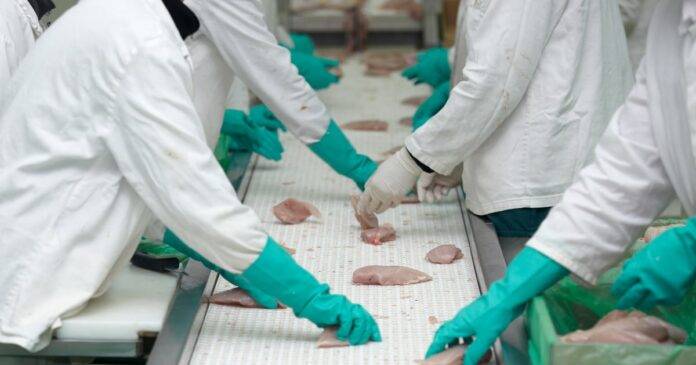A recent study conducted in the United States has shed light on the potential for upcycling nutrient-rich wastewater from poultry slaughterhouses for the cultivation of nutritional yeast, specifically Yarrowia lipolytica. Published in the Journal of Environmental Chemical Engineering, the research findings indicate that this approach could not only lead to more sustainable waste management practices in the poultry industry but also yield valuable single-cell proteins.
Poultry processing operations generate significant amounts of wastewater, much of which is typically discharged into municipal treatment facilities. One key byproduct of this process is the liquid fraction separated from fatty materials in dissolved air flotation (DAF) units, commonly referred to as ‘blood water.’ DAF systems, commonly used in abattoirs, play a crucial role in reducing fats, oils, and grease (FOG) in wastewater. Despite its high nutrient content, including approximately 3.5 g/L of free amino acids and 0.9 g/L of proteins, blood water is often discarded, representing a missed opportunity for resource recovery, according to researchers from Auburn University in Alabama.
The researchers suggest that upcycling this resource through yeast cultivation could offer both economic and environmental benefits. By exploring the feasibility of using blood water as a fermentation medium for Y. lipolytica, a yeast known for its ability to thrive on lipid- and protein-rich organic waste, the team aims to capitalize on the yeast’s potential as a functional animal feed additive. Moreover, Y. lipolytica is classified as Generally Recognized as Safe (GRAS) by the US Food and Drug Administration (FDA), further supporting its use in this context.
One of the major challenges associated with utilizing blood water is its instability and tendency to produce malodorous compounds over time. To address this issue, the researchers conducted experiments to assess the impact of different storage temperatures (-20℃, 4℃, and 22℃) on the medium’s quality and yeast growth performance over a six-week period. Their findings revealed that blood water stored at -20℃ and 4℃ maintained yeast growth potential for up to one week with minimal performance loss, while storage at 22℃ resulted in significant degradation, leading to a decline in yeast growth.
Frozen storage at -20℃ proved to be particularly effective in preventing amino acid loss and mitigating the formation of sulfur-containing volatile compounds, thereby reducing malodors. Storage at 4℃ also extended the stability of amino acids, albeit to a lesser extent than frozen storage.
The implications of this research are significant, especially considering the scale of the US poultry industry, which produced 21.3 million metric tons of chicken meat in 2023 and generates over 253 billion liters of wastewater annually. The study highlights the potential benefits of establishing yeast production facilities in close proximity to poultry processing plants, as this could reduce costs associated with cooling and transporting blood water while maximizing nutrient recovery.
In conclusion, the findings of this study point to a promising avenue for improving waste management practices in the poultry industry through the upcycling of nutrient-rich wastewater for yeast cultivation. By leveraging the capabilities of Yarrowia lipolytica, researchers hope to not only address environmental challenges but also create valuable products with applications in animal feed and beyond.
Source: Journal of Environmental Chemical Engineering




